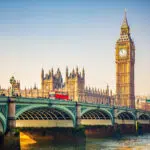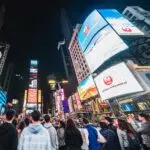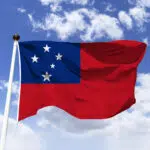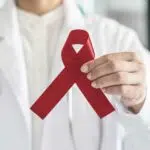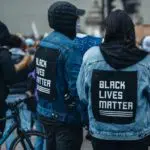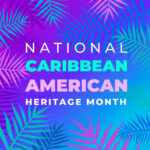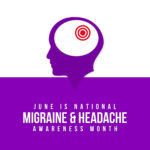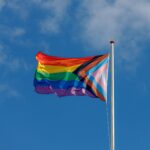Every June 1 marks the start of Black Lives Matter Month, an opportunity for all Americans to make a stand against racism and racially-motivated violence. Founded as a hashtag in 2013, Black Lives Matter has grown into thousands of decentralized chapters advocating for equality and justice for the Black community, and protesting against violence against black people at the hands of law enforcement.
Arguably one of the largest protest movements in the country today, its numbers and influence have swelled as a result of the global outcry over the killing of George Floyd at the hands of Minneapolis Police Officers in May of 2020, which has, in turn, led to serious questions being raised such as whether qualified immunity should be abolished and whether the police should be defunded.
History of Black Lives Matter Month
The Black Lives Matter movement began as a social media response to an acquittal in the 2013 shooting death of African-American teen Trayvon Martin. The acquittal sparked outrage around the country leading to mass demonstrations against racially-motivated injustice and racism among law enforcement.
Initially begun as the hashtag #BlackLivesMatter and circulated by three black community organizers in Los Angeles, Alicia Garza, Patrisse Khan-Cullors, and Opal Tometi, Black Lives Matter has grown into a global movement for racial equality, justice, anti-racism, and anti-violence against black people by law enforcement.
In August of 2014, the BLM movement organized its first large-scale protest in response to the death of Michael Brown at the hands of a Ferguson, Missouri police officer. The Black Lives Matter Freedom Ride consisted of more than 500 members participating in non-violent demonstrations.
Since that initial August 2014 protest, the decentralized and largely non-violent civil rights movement has been a central figure in the public responses to the unlawful killing of black people by law enforcement. Among the most notable are the 2014 killings of Akai Gurley and Eric Garner by members of the New York Police Department and now the May 2020 killing of George Floyd by four Minneapolis Police Officers.
In May 2020, the killings of Breonna Taylor by Louisville police while she slept in her bed and Ahmaud Arbery while peacefully jogging through a Georgia neighborhood brought attention to violence against black people. But it was the killing of George Floyd by a Minneapolis Police Officer that captured the nation’s attention. One officer kneeled on Floyd’s neck for nearly nine minutes. The act, which was filmed and released globally, sparked hundreds of demonstrations around the globe. Nearly every major U.S. city and even some smaller towns have had demonstrations organized and influenced by the Black Lives Matter movement. All four officers have been charged.
Black Lives Matter Month timeline
Within days, countries around the world reacted to the death of George Floyd and Breonna Taylor with protests in support for anti-racism in cities like, Tokyo, Brussels, London, Mexico City, Paris, São Paulo, Johannesburg, and many more.
The spring of 2020 brought the deaths of Breonna Taylor, George Floyd, and more at the hand of police. This sparked international protests and calls for police reform.
Black Lives Matter takes part in a march for peace across the Ravenel Bridge in South Carolina as part of demonstrations against the mass shooting of nine people at an historically black church in Charleston by a white supremacist.
Black Lives Matter members organized their first national protest after the shooting death of Michael Brown by Ferguson, Missouri law enforcement.
The Black Lives Matter movement began with the eponymous hashtag as a result of the acquittal in the shooting death of unarmed black teenager, Trayvon Martin.
How to Observe Black Lives Matter Month
Support the movement through action and aid
The most obvious way to get involved is to join a non-violent protest, but there are other ways to help the movement. Support scholarships aimed at African-American students or donate to advocacy groups that support positive change such as the NAACP Legal Defense and Education Fund and the Equal Justice Initiative. Whatever you do, do it loud and proud to show support and help others do the same.
Make your voice heard on election day
Every year in America we have a chance to force change at the ballot box through local, statewide, and national elections. Take that chance and vote. The Black Lives Matter movement is at its most effective when it is calling for positive action. Voting is your Constitutional right to act on the change you believe in.
Have a difficult conversation
Start a conversation with the people in your life about racism, injustice, violence, and the other ways people are marginalized, no matter how awkward or charged it gets. Do it for those who tragically no longer have a voice of their own.
Why Black Lives Matter Month is Important
It rallies people toward action against racism and racial injustice
The Black Lives Matter movement has become synonymous with the struggle against racial inequality, particularly that which is present within our social systems. BLM has helped shine a light on racism and united reformers from many walks of life.
It forces people to empathize with others
We all have different life experiences, and many of those experiences are dictated by how others see us. Depending on where you live or how you look, your life experience could differ drastically even from your next-door-neighbor. During this month, get out of your comfort zone and sincerely consider what it is like to walk in someone else’s shoes.
It is a visible force for equality
Despite attempts by some to distort or hijack its message, the Black Lives Matter movement believes in ending racism and violence used against ALL black lives. It strives to build a broad coalition to finally end racial injustice.
Black Lives Matter Month dates
| Year | Date | Day |
|---|---|---|
| 2026 | June 1 | Monday |
| 2027 | June 1 | Tuesday |
| 2028 | June 1 | Thursday |
| 2029 | June 1 | Friday |
| 2030 | June 1 | Saturday |
















